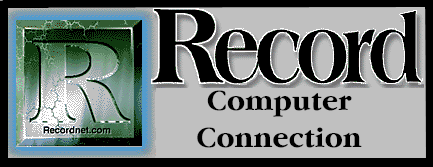

It seems you can hardly pick up a computing publication these days without the headlines being littered with articles, reviews and announcements about multimedia computing. My recent visit to Fall COMDEX convinced me that not only is the multimedia revolution in full swing, but it is also poised to assume the frontal position in the future of personal computing. At the heart of this audio and visual uprising is the CD-ROM.
CD-ROM stands for Compact Disc, Read-Only Memory. Read-Only means that you can only retrieve information from a CD-ROM disc. You cannot write to or save information on a CD-ROM disk. Computer CD-ROM is similar to the familiar audio CD players in that laser technology is used in both to convert light patterns into data. The similarity ends here though, because CD-ROM drives for computers are much more complex than audio CD players and demand much higher speeds of data transfer and retrieval.
The popularity of CD-ROM stems from the gargantuan storage space available in this medium. A single CD-ROM disk can hold over 600 megabytes of data. This is by far larger than most average users have in hard disk storage space. One CD can hold as much data as 750 floppy diskettes, or approximately 300,000 pages of written text. Because of this seemingly endless space, software developers can load-up on sound, video and graphic images in CD applications for an incredible sensory effect.
Even everyday standards are now being enhanced thanks to CD-ROM. Quicken Deluxe edition for CD-ROM ($79) offers all the great features of Quicken plus a video tutorial in which Intuit staff actually take you step-by-step through the application. Also included is the Wall Street Journal's Personal Finance Library, an electronic stock guide and a selection of U.S. government personal finance publications. Such a breadth of data would consume most of your hard disk space.
Microsoft Word 6.0 also comes in a CD-ROM version bundled with Microsoft Bookshelf. This includes The Concise Columbia Encyclopedia, The American Heritage Dictionary, The Original Roget's Thesaurus, The World Almanac and Book of Facts 1994 and The Concise Columbia Dictionary of Quotations ($399 or $149 as an upgrade). You can instantly use any of these reference sources while creating your document in Word and also insert graphic images for a jazzy presentation.
When purchasing a CD-ROM drive for your computer, whether it's a new multimedia system, or an upgrade to an existing system, it is important to know the industry guidelines in order to be an informed consumer. Two factors are critical in evaluating the performance of a CD-ROM drive: data-handling speed and data retrieval speed.
The speed at which a CD-ROM drive transfers data is measured in KBps, or kilobytes per second. The first generation of drives transferred data at 150 KBps, or single speed. This standard was quickly was surpassed by double-speed (300KBps) due to the data intensive CD applications that were sluggish at single speed. Though double-speed is now considered the standard, quad speed (600KBps) is quickly moving in as the favorite. If you can afford it, spring for the quad speed CD-ROM drive.
The seek time, or data retrieval time is the next standard to examine. Access time is measured in ms, or milliseconds and most CD-ROM drives fall between the 200 to 500 ms range. Obviously, the lower the seek time the better the overall performance. Especially if you are choosing a quad speed CD-ROM drive, it is critical that your seek time is below 250 ms, or else that speedy CD drive will be negated by the lengthy retrieval time.
Lastly, make sure your CD-ROM drive has plenty of internal cache memory, 256K or more for quad speed, and that you select a drive that has a SCSI (Small Computer System Interface) to connect to your PC. You'll be less likely to experience system conflicts if you stick to the SCSI standard.
Once you're all set, try a few of these great CD titles: Microsoft Encarta (encyclopedia by Microsoft), Guiness Multimedia Book of Records (Groliers), Rebel Assault (super Star Wars by LucasArts), 7th Guest (realistic haunted house game by Virgin Games), any of the Living Books for children, and The Playboy Interview: Three Decades (since everyone only read the articles anyway...by IBM Multimedia Publishing).